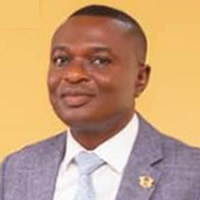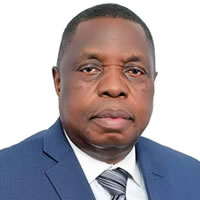Ethnicity
The predominant ethnic group in the region and in all the districts is Akan, except in Sene where the Guans predominate. Apart from Sene and Atebubu where the Ewes and Gurmas are the second predominant ethnic groups, the Mole-Dagbon ethnic group is the second largest in all the other districts. Three other groups of northern origin, Gurma, Grusi and Mande-Busanga are one-tenth of the region’s population. Ethnic groups of northern origin are therefore slightly more than a quarter of the region’s population.
The large proportion of Ewes in Sene is due to the fishing activities along the region’s side of the Volta Lake. The presence of the Guans in large proportion in Atebubu and Sene may not be due entirely to migration. That part of the region was formerly part of the Northern Region, inhabited by the Gonjas, one of the Guan sub-groups, before it was made part of Brong Ahafo in 1959.
Religion
Though more than half of the population in Atebubu (50.5%), Kintampo (51.4%) and Sene (56.6%) profess to be Christians, the proportion of Christians in these districts is low compared to the other districts.
Islam is practised mainly in Kintampo (29.7%) and Atebubu (24.4%), where Moslems outnumber the two most professed Christian denominations, Catholics (21.4%) and Pentecostals (17.6%). The Moslems are mainly Mole-Dagbon who are quite a substantial group in the districts. Techiman (20.7%) and Wenchi (20.0%) also have a sizeable number of Moslems, though Catholics outnumber them. Islam (6.1%) and traditional religion (10.6%) are least practised in Berekum.
Traditional religion is most practised in Sene (18.8%), followed by Atebubu (15.7%) and Kintampo (10.0%). Sene also has the largest proportion professing no religion (13.6%). Traditional religion ranks second after Pentecostal while no religion ranks fourth after Catholic in the district. Nkoranza also has more than one tenth (11.6%) of the population professing no religion.
In Sene where the proportion of male Pentecostals is higher than females, the proportion female is larger than male in all three major Christian denominations in all districts. On the other hand, the proportion of males professing Islam, traditional and no religion, in all districts of the region, is higher than females.
Tourism Attraction Sites
Another type of tourist attractions are caves, sanctuaries and groves. The Buabeng-Fiema Monkey sanctuary, located 22 kilometres north of Nkoranza, covers a forest area of 4.4 square kilometres. It serves as home for black and white colobus and mona monkeys. The forest also provides a natural habitat for different species of butterfly. Buoyem caves, which are hidden in a dry semi-deciduous forest, house a large colony of Rosetta fruit bats. The Pinihini Amovi caves are also historic underground caves near Fiema.
Apoo Festival
Is a festival celebrated annually in Ghana (specifically the towns of Techiman and Wenchi), lasting a week in March and April. The festival is meant to ritually purify the people of social evils, as well as uniting people and families, and includes a variety of other traditional cultural activities. The word 'apoo' comes from the root word 'po', meaning 'to reject
Kurubi Festival
This festival is celebrated by the people of Kintampo in November and mainly to unite all Wangara descent in Ghana. Virgins normally dance on stilts as an interesting part of the festival.
Nkyifie Festival
The people of Prang celebrate it annually in September and October.
Date Created : 8/17/2023 12:00:00 AM





 facebook
facebook X (twitter)
X (twitter) Youtube
Youtube +233 593 831 280
+233 593 831 280 0800 430 430
0800 430 430 GPS: GE-231-4383
GPS: GE-231-4383 info@ghanadistricts.com
info@ghanadistricts.com Box GP1044, Accra, Ghana
Box GP1044, Accra, Ghana